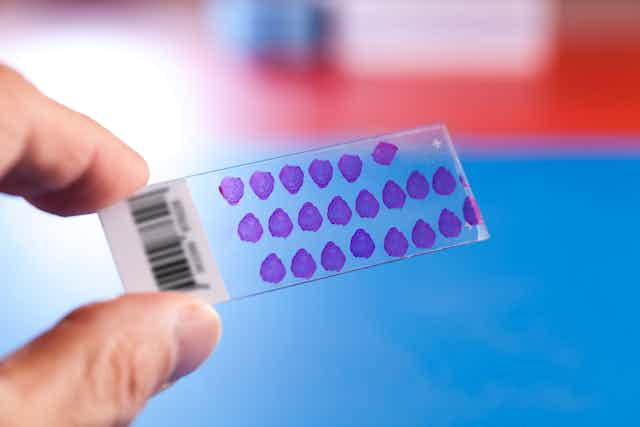I’ve been working in the NHS for nearly 40 years and in that time I have encountered numerous rare diseases. Despite their name, as a collective they add up and are more common than you might think.
A rare disease is defined by the European Union as one that affects less than five in 10,000 of the general population. There are between 6,000 and 8,000 known rare diseases. Around five new rare diseases are described in the medical literature each week. One in 17 people, or 7% of the population, will be affected by a rare disease at some point in their lives. This equates to about 3.5m people in the UK and 30m people across Europe.
Spotting the rare disease
By definition, a rare disease isn’t always easy to spot. The first step to identifying a rare disease in a patient suspected of having one is by referring them to a speciality clinic. Sometimes the possibility of a rare disease may be obvious from the start because of the rapid onset of typical symptoms.
For example, a child who develops Cushing’s disease, due to excessive secretion of a steroid hormone, may show features such as central body obesity or rounding of the face. An early referral to an endocrinologist should then lead to a firm diagnosis.
But more commonly, the early features of rare disease are subtle and the underlying problem may not be identified for many years. Examples are familial lipid disorders such as lipoprotein lipase deficiency which can cause milk-like blood and tummy pains due to inflammation of the pancreas. Another such condition is Tangier disease, a very rare cholesterol transport disorder, which sometimes causes large tonsils.
With these conditions, abnormalities in a blood test may not be spotted by either laboratory or clinical staff. The significance of an unusual blood result may not be immediately apparent. It may be considered to be due to secondary factors rather than a primary genetic disorder.
The patient may even have been admitted into hospital because of a complication of a rare disorder but the clue to the underlying condition is missed. For example, Acute porphyria caused by abnormal haemoglobin metabolism, may evade suspicion for years unless ward staff notice a urine colour change when exposed to sunlight.
Vigilance needed
The diagnostic process is most efficient when an experienced specialist follows a predefined protocol and uses a well established network to provide the investigations needed. Things may not work quite so well when the suspected disease is extremely rare and the required tests are not readily available. Or delays occur when tests involve complicated labour-intensive procedures. Often a multidisciplinary team is involved. Good communication between members of this team is the key to confirming an early diagnosis.

The challenge for the future is to set up numerous networks linking centres of expertise. A good example of an established network is the European Porphyria Initiative EPNET. EPNET’s mission is to improve lives of porphyria patients by improving the diagnosis and treatment of this group of rare conditions. The initiative has been funded by the EU Department for Health and Consumers since 2007 and it has established an effective network of specialist porphyria centres throughout the EU – it currently consists of 33 EU specialist centres from 21 European and candidate countries that work together to develop an up-to-date consensus approach to the management of patients and families with porphyria. It has associate members from Australia, Brazil, New Zealand, South Africa and the US.
The benefits are many. They include the provision of information to patients (in their own languages) and healthcare professionals and the use of external quality assessment to develop quality standards for diagnosis and clinical advice. A web-based registry to collect data about the porphyrias to inform clinical practice and healthcare planning and dissemination of information on safety of drugs are further benefits. Progress is communicated to partners through annual meetings and reports.
The result of this network and its activities is a positive effect on the quality of diagnosis, number of patients diagnosed and treatment choices.
Helpful networks
Another organisation that contributes to better diagnostics is The European Organisation for Rare Diseases. This is a non-governmental, patient-driven alliance of patient organisations and individuals active in the field of rare diseases. It also promotes research on rare diseases and the commercial development of new drugs.
Other organisations across the world have a similar focus. These include the National Organisation for Rare Disorders in the United States, the Canadian Organisation for Rare Disorders in Canada, the Allianz Chronischer Seltener Erkrankungen in Germany, and the Federación Española de Enfermedades Raras in Spain.
The NHS, working with UK speciality groups such as the Royal College of Pathologists and the Association for Clinical Biochemistry, should also form networks nationally and internationally to focus on better diagnosis and management of rare diseases. This is essential for developing early and better care for those with rare conditions.
Individual rare disease may be ignored by medical educators in the belief that trainee doctors need to know mostly about the common diseases. However collectively all rare diseases are not uncommon and initiatives to raise awareness of such conditions will benefit many people. To quote Alastair Kent, chair of Rare Disease UK: “Working together we can secure the best use of scarce expertise and resources, maximising the health gain for all those with rare conditions”.

